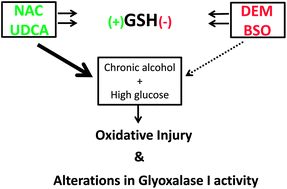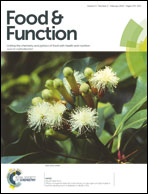Modulation of GSH with exogenous agents leads to changes in glyoxalase 1 enzyme activity in VL-17A cells exposed to chronic alcohol plus high glucose
Abstract
Gluthathione (GSH) is a major cellular antioxidant. The present study utilizing VL-17A cells exposed to chronic alcohol plus high glucose investigated the changes in oxidative stress, toxicity, and glyoxalase 1 activity as a detoxification pathway due to changes in GSH level through GSH supplementation with N-acetyl cysteine (NAC) or ursodeoxycholic acid (UDCA) and its depletion through buthionine sulfoximine (BSO) or diethyl maleate (DEM). Glyoxalase 1 plays an important role in detoxification of methylglyoxal which is formed as a precursor of advanced glycated end products formed due to high glucose mediated oxidative stress. Significant changes in glyoxalase 1 activity utilizing methylglyoxal or glyoxal as substrates occurred with NAC or UDCA or BSO or DEM supplementation in chronic alcohol plus high glucose treated VL-17A cells. NAC or UDCA administration in chronic alcohol plus high glucose treated VL-17A cells increased viability and decreased ROS levels, lipid peroxidation and 3-nitrotyrosine adduct formation. Similarly, GSH depletion with BSO or DEM had an opposite effect on the parameters in chronic alcohol plus high glucose treated VL-17A cells. In conclusion, modulation of GSH with NAC or UDCA or BSO or DEM leads to significant changes in oxidative stress, glyoxalase 1 enzyme activity and toxicity in chronic alcohol plus high glucose treated VL-17A cells.


 Please wait while we load your content...
Please wait while we load your content...